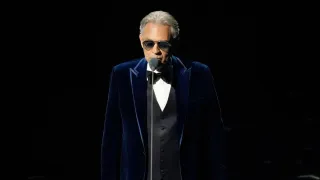November 26, 2017
Eating Disorders and the LGBTQ Community
Myra Hendley, Primary Therapist, Eating Recovery Center READ TIME: 3 MIN.
Eating disorders are no longer assigned only to teenage girls, but are
affecting anyone regardless of race, gender or any other division. When general self-worth suffers, eating disorders can often present in people's lives as a way to cope or fill a void.
Physical self-worth or body image are commonly associated with eating
disorders and can be a prevalent topic within the LGBTQ population as well.
A recent trend in the eating disorder world is "healthy" or "clean eating" and/or an obsession with being fit and working out.
Eating disorder professionals call this orthorexia. While not an official diagnosis, it is a catchall term for a certain presentation of an eating disorder, like a slang word. Orthorexia refers to someone who is obsessed with healthy eating: "Being aware of and concerned with the nutritional quality of the food you eat isn't a problem in and of itself, people with orthorexia become so fixated on so-called 'healthy eating' that they actually damage their own well-being." (National Eating Disorders Association)
The health consequences and treatments are like that for anorexia. Health blogs, social media and new exercise trends can trigger someone who is predisposed to developing this type of eating disorder. "Signs of orthorexia include, but are not limited to: Body image concerns, checking nutrition labels, limiting ingredients or categories of foods (meat, sugar, fats, etc.), focus on what others eat, and spending time considering the future for fear of what food will be served at an event." (NEDA)
The intense focus on body image and self-image in gay men increases their susceptibility to developing an eating disorder. I asked a patient in my practice about eating disorders in the LGBTQ community and they responded, "I think that gay men have it tough because they have a lot of pressure to be thin."
Unfortunately, this stereotype is perpetuated in media and society. NEDA reports that gay men are disproportionately identified as having poor body image compared to other populations. Gay men represent only five percent of the population, but 42 percent of those men have eating disorders (NEDA).
While eating disorders are highly prevalent in the LGBTQ population as a whole, gay and bisexual men are seven times more likely to binge and 12 times more likely to purge than heterosexual men, according to the National
Eating Disorder Association (NEDA). "The pressure to be physically perfect in society also factors into developing an eating disorder. In the last four to five years too," NEDA states, "there has been more consideration of the transgender population in regard to eating disorders. Physical pressures are inherently difficult in our society, but someone who is transgender has added vulnerabilities and a societal push to 'fit in.' "
A rough estimate of at least 50 percent of my patients at any given time, report they are struggling with their sexuality. The National Eating Disorder Association (NEDA) states that lack of support or safe spaces to access mental health care could lead to eating disorders for a LGBTQ person and that "A sense of connectedness to the gay community is related to fewer eating disorders."
It stands to reason, then, that proving a good support system is a preventative factor for a LGBTQ person for avoiding or developing an eating disorder.
Three things come to mind when considering the leading causes of eating disorders in the LGBTQ population:
1. Many patients who have an eating disorder have experienced trauma. They are likely to hide events in their past, that coupled with a genetic predisposition, can create an eating disorder.
2. Family of origin influences. If a person is a part of a non-supportive system, they are likely to develop maladaptive coping skills to deal with anxiety and depression that can manifest as an eating disorder.
3. Weight stigma in a society contributes to the development of an eating disorder. If one can think of an eating disorder symbolically they will gain insight to why the LGBTQ population presents for eating disorder treatment. An anorexic patient may hide their self or who they are and then resort to restricting their food and shrinking away to nothing, oppressed in society. A Bulimic patient or a binge eating patient may seek to fill the void of social acceptance that initiates a cycle of binging and purging. If food represents feelings, then it is easy to also see how carrying around shame regarding sexuality can drive an Eating Disorder.
Freedom from oppression can start with freedom in eating. When a connection like this is identified, people who struggle with sexuality and an Eating Disorder can break the silence of the shame cycle and begin the path to recovery.
For additional information about the Eating Recovery Center, call 877.789.5758, email info@eatingrecovery- center.com, or speak with a Masters-level clinician at eatingrecoverycenter.com
 Copyright Rage Monthly. For more articles from Rage visit
Copyright Rage Monthly. For more articles from Rage visit 





